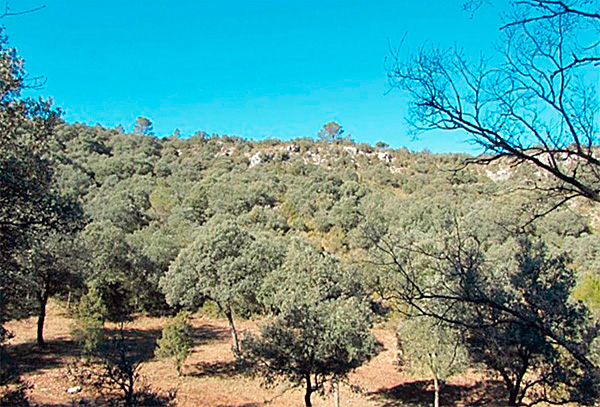The transpiration of groundwater resources is a fundamental aspect to be considered in hydrological modelling, in order to obtain an accurate representation of the availability of water resources in a watershed and to improve our knowledge of the hydrological cycle. This is the main conclusion of the article “Explaining the hydrological behaviour of facultative phreatophytes using a multi-variable and multi-objective modelling approach”, authored IIAMA researched (Instituto de Ingeniería del Agua y Medio Ambiente), Cristina Puertes, Antonio Lidón, Carlos Echeverría, Inmaculada Bautista, María González-Sanchis, Antonio D. del Campo and Félix Francés.
The study published in the Journal of Hydrology is part of the activities of the LIFE RESILIENT FORESTS project, which analyses the water-forest interactions, at a experimental site located in “La Hunde” (Ayora) and characterized by the predomincance of holm trees (Quercus ilex). The research is based on the hypothesis that trees in semiarid conditions with scarce water and shallow soils, can survive thanks to their ability to access groundwaters. The traditional hydrogeological management models do not include the transpiration of groundwaters and for this reason they tend to underestimate evapotranspiration and overestimate the recharge of aquifers.
“Semi-arid areas are characterized by having a limited availability of water and the vegetation in these areas must find ways to adapt to these climatic conditions. In practice, the soil at the site in La Hunde is very shallow, around 30 centimetres, and the water is stored in the karstic rocks beneath. For this reason, the roots of the holm trees have penetrated those rocky layers in order to survive the summer season, when the topsoil is dry”, expains Cristinal Puertes, the lead author of the study. “At the beginning of our different modelling tests we observed that the holm trees could not survive if we don’t factor in the transpiration of groundwater. For this resons, we modified the models of TETIS and LEACHM to include this process”, she continues.
Afther this, Cristina designed a calibration system which includes multivariable objectives (soil moisture and transpiration) which will help in determining the ydrological behaviour of “facultative phreatophytes” in semiarid conditions. This calibration system was compared with single-variable systems in order to measure its precision. “The results established that multi-variable calibration is a good tool to simulate the hydrological behaviour of this kind of forests, provided that sufficient data is available», Cristina says.
In practice, the results showed that the holm trees rely heavily on groundwaters especially during summertime, when the transpiration from the underground layers can represent 40 to 70% of the total transpiration.
“This research shows that the hydrological models applied to semiarid regions must include the process of transpiration of groundwaters, since the forests in these areas can influence significantly the future availability of water”, Cristina concludes.
This post is based on the article Debemos cuantificar la transpiración de los recursos subterráneos en la modelación hidrológica originally published by Iagua Magazine.

